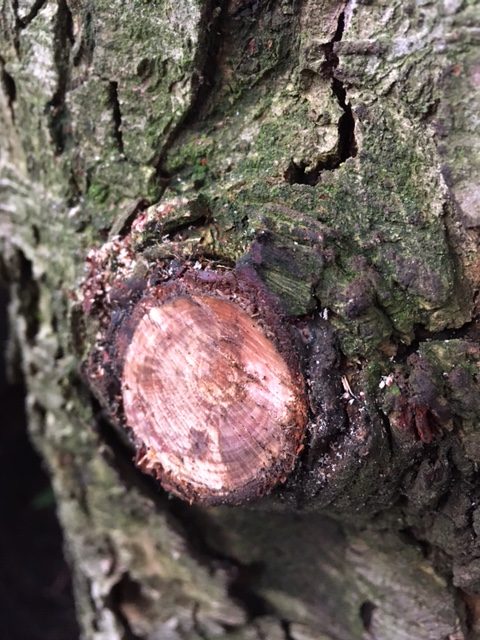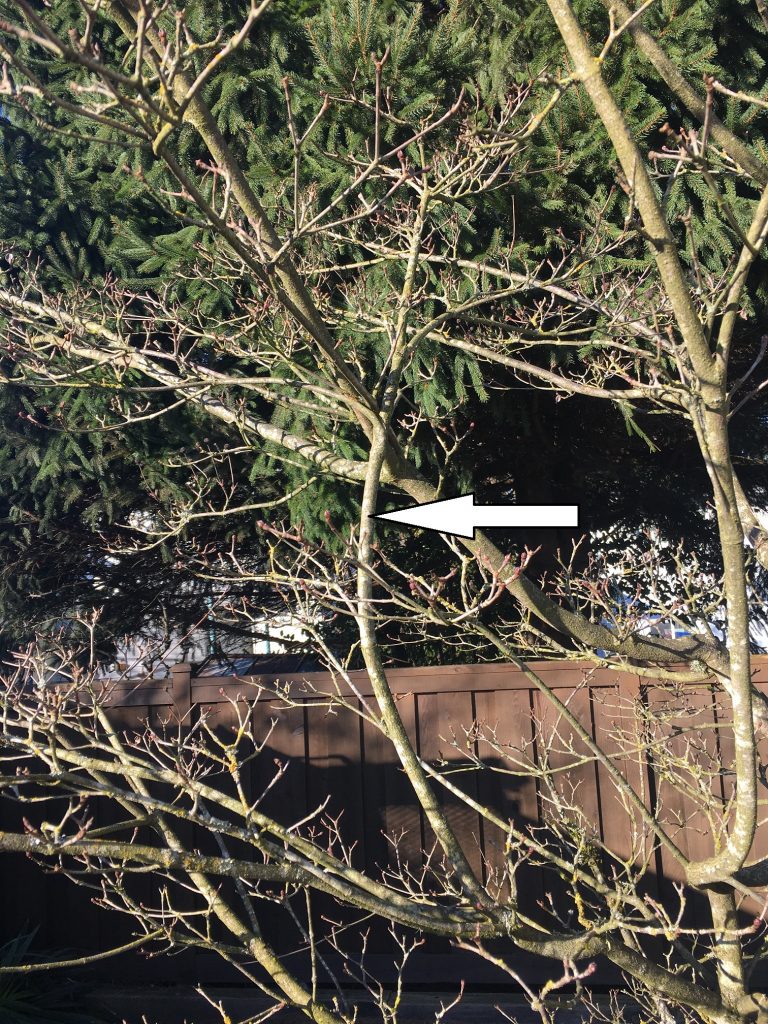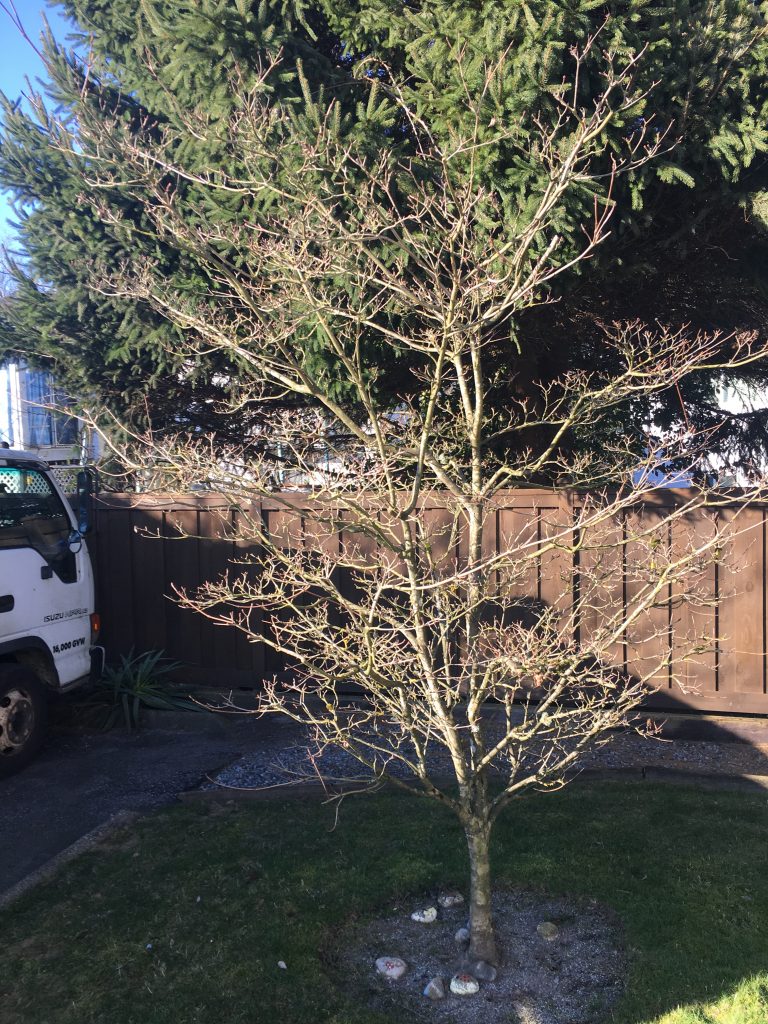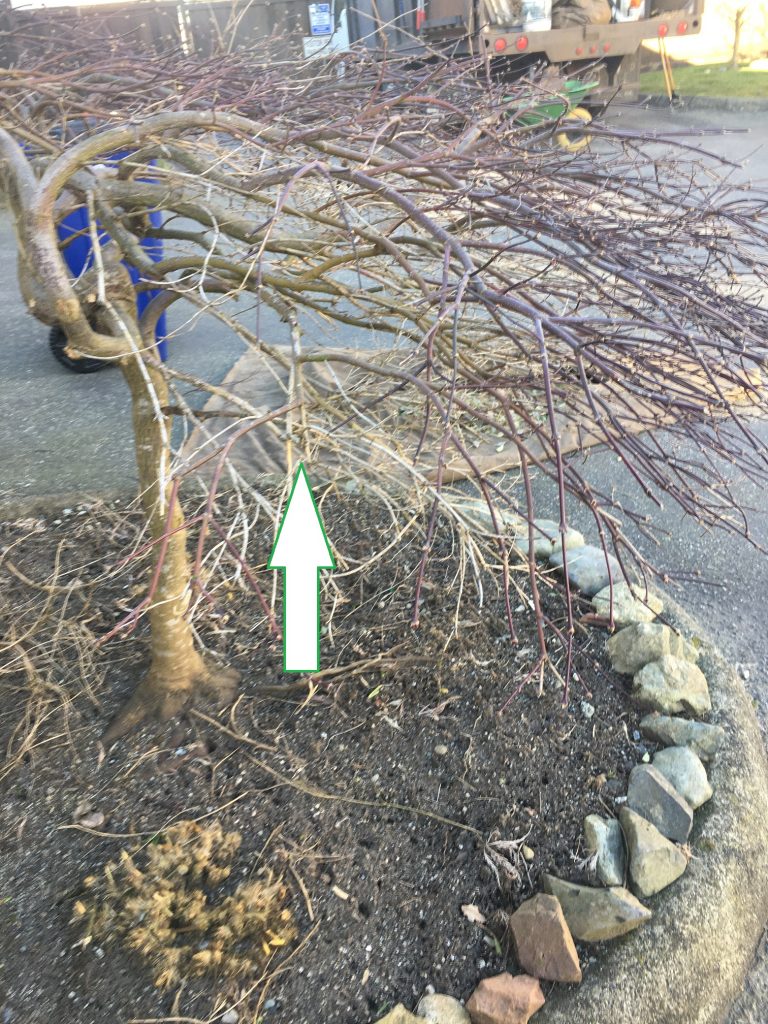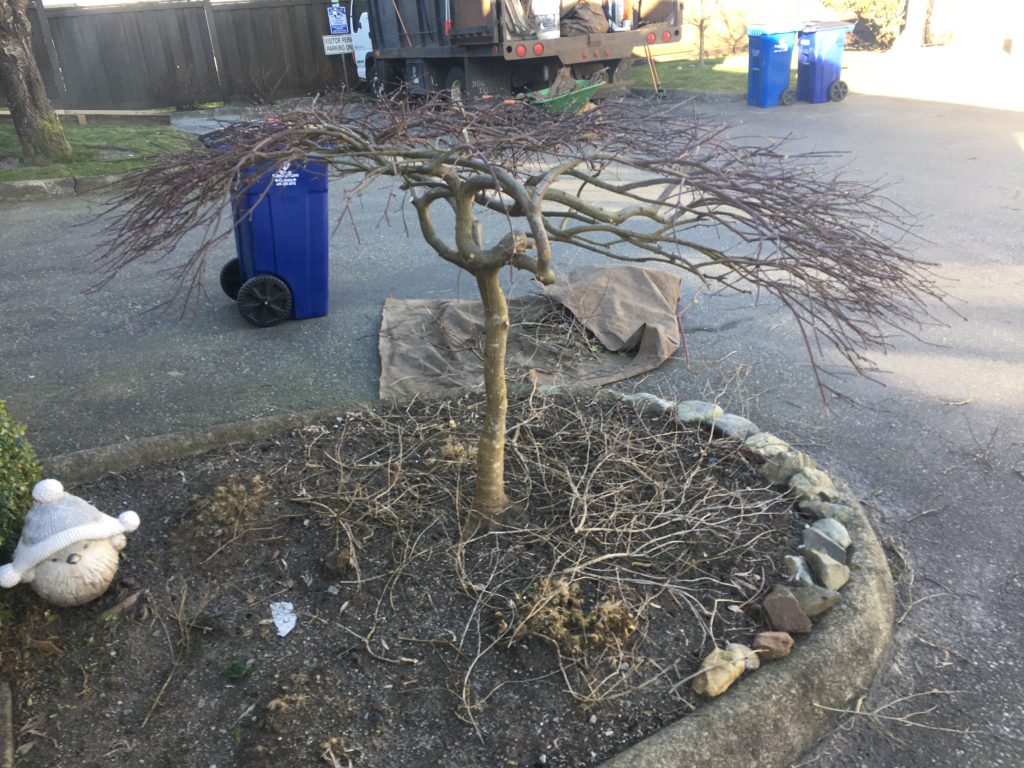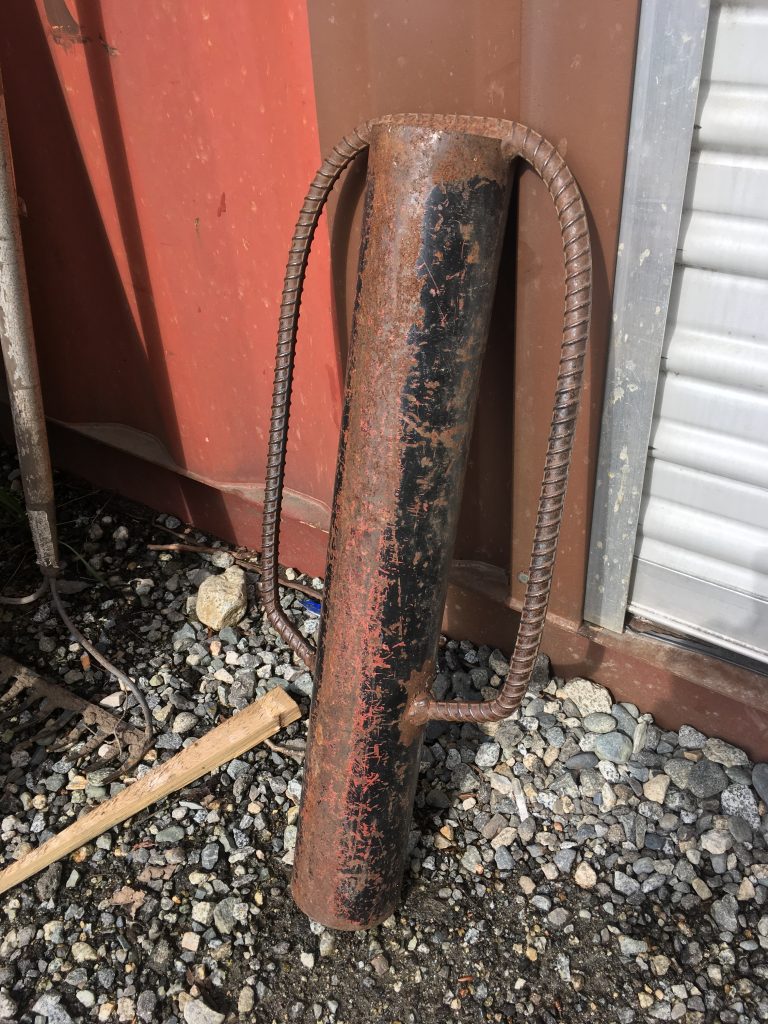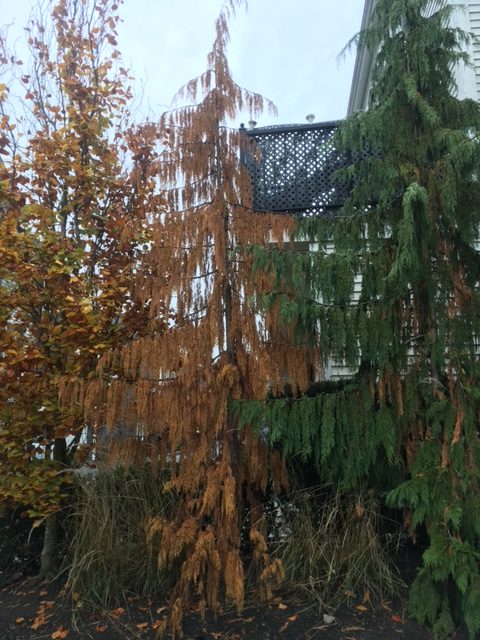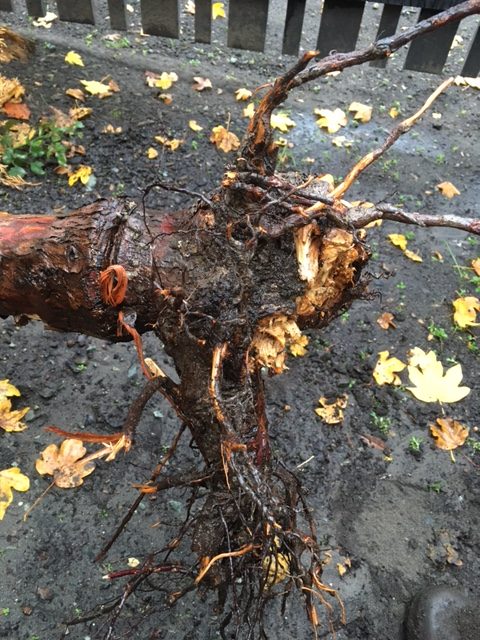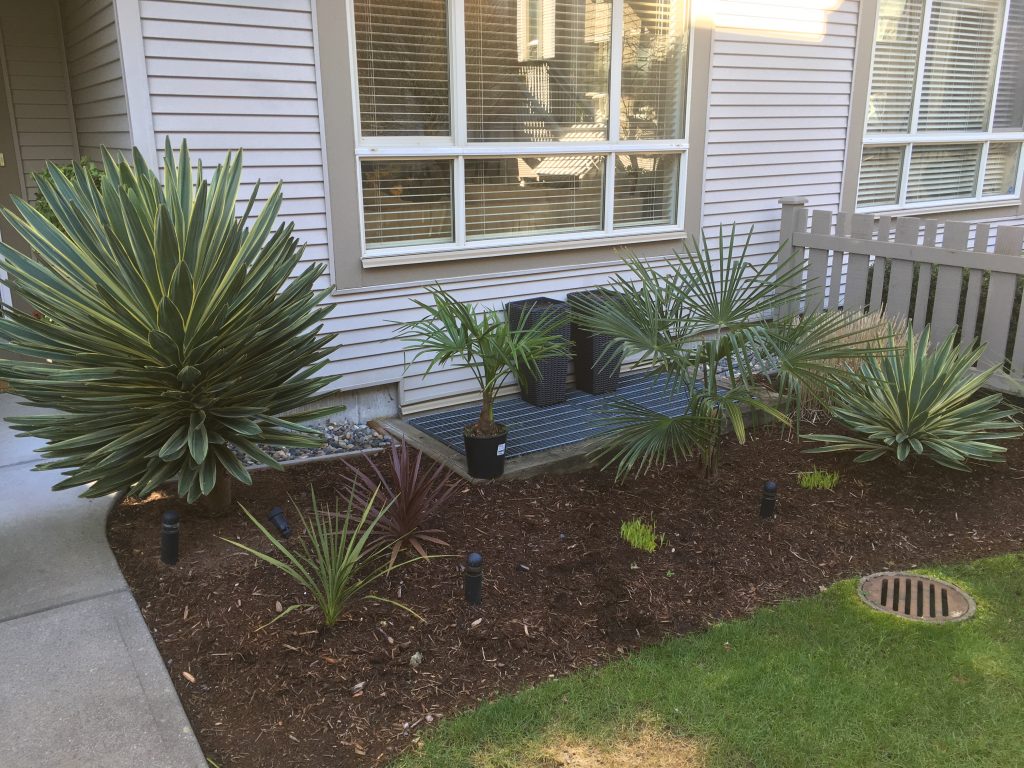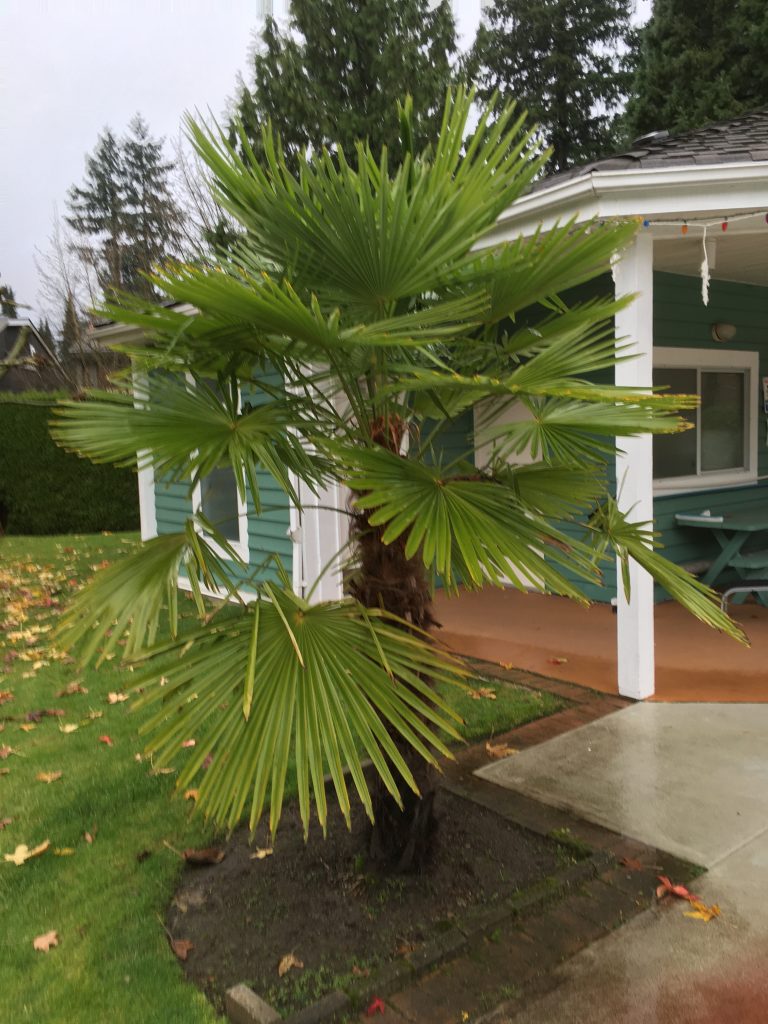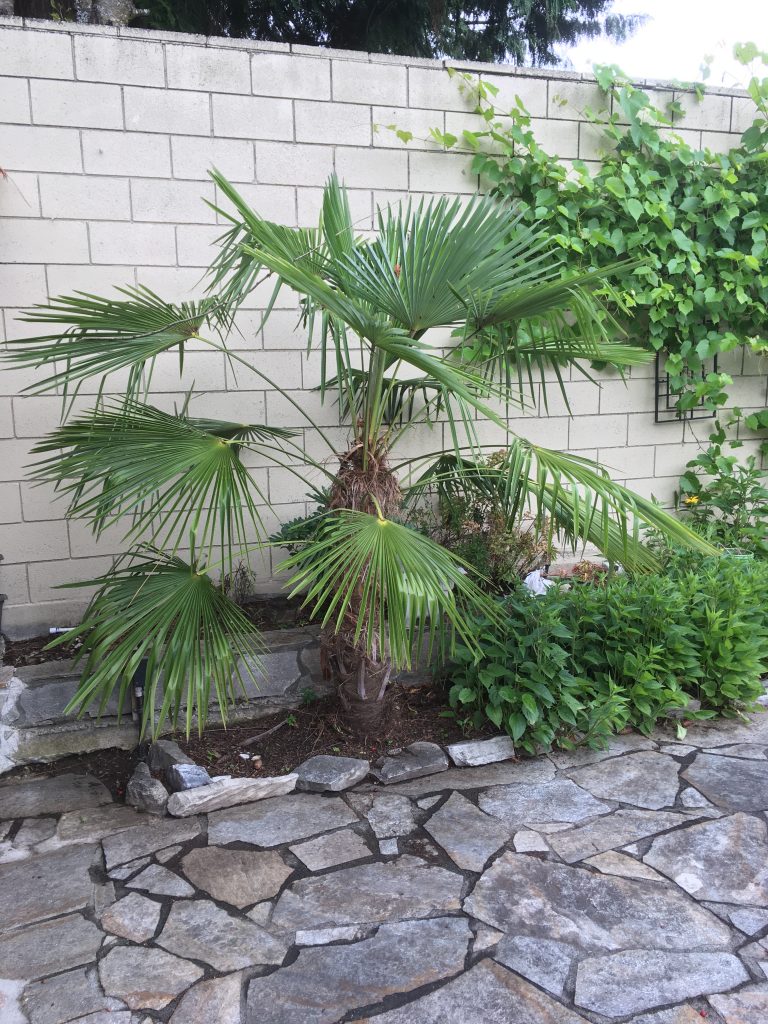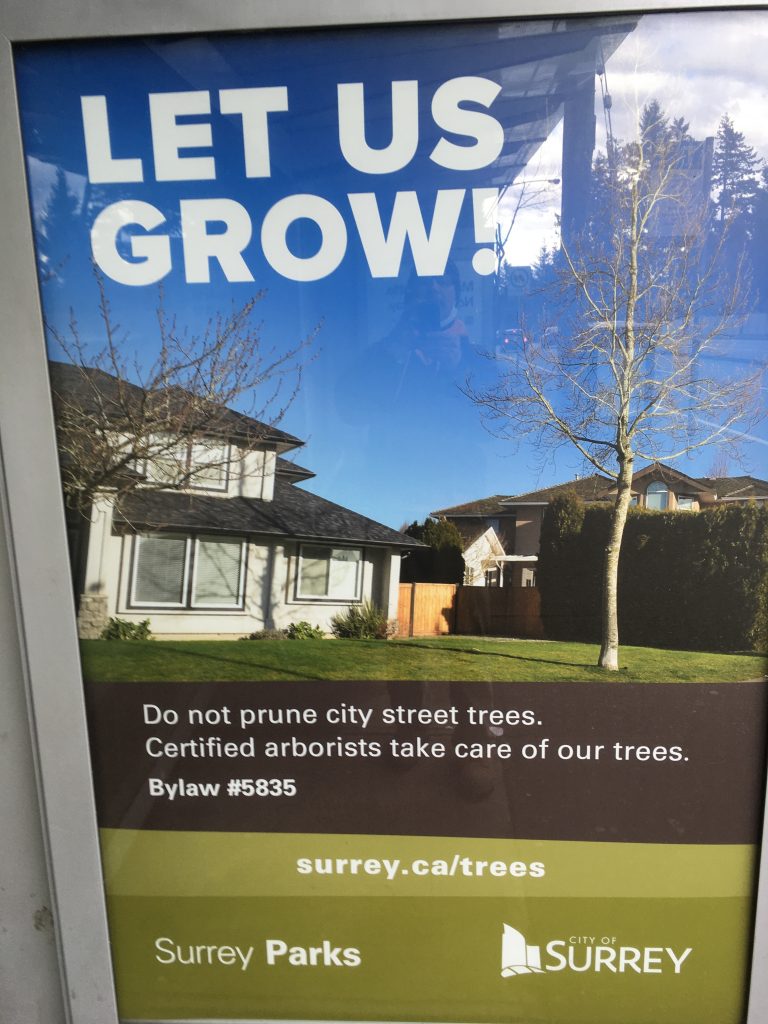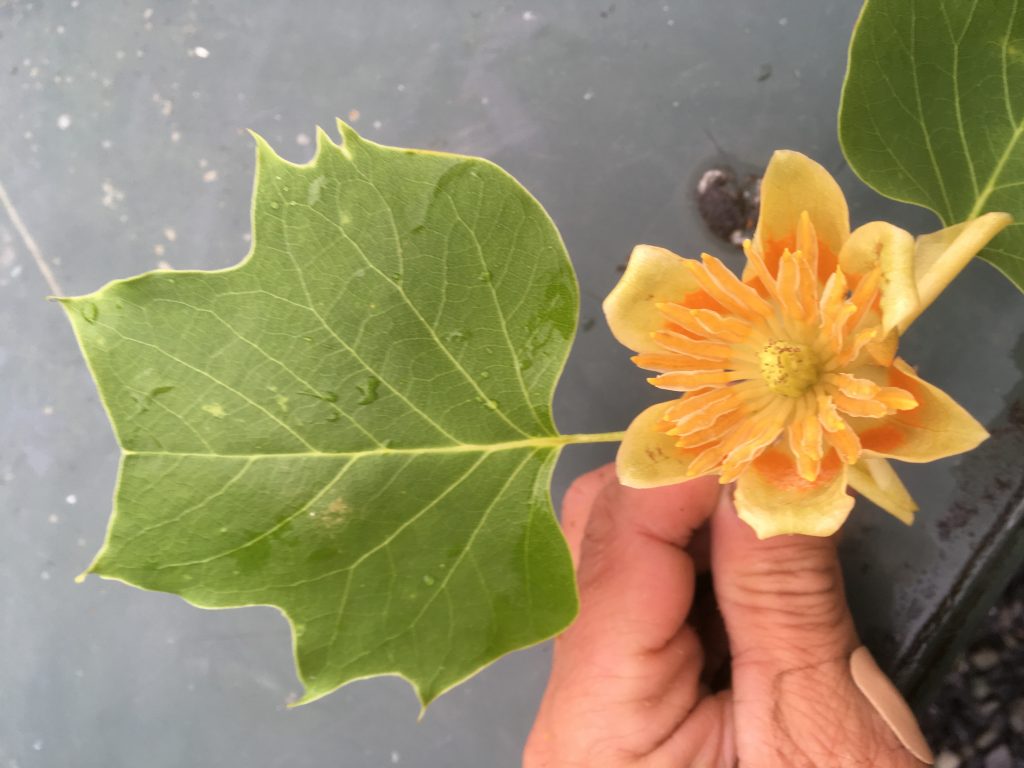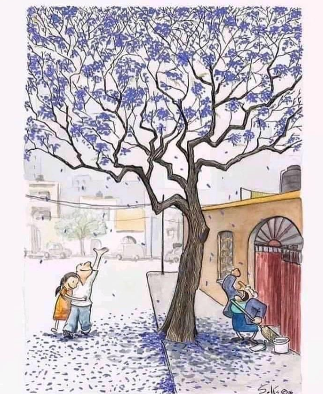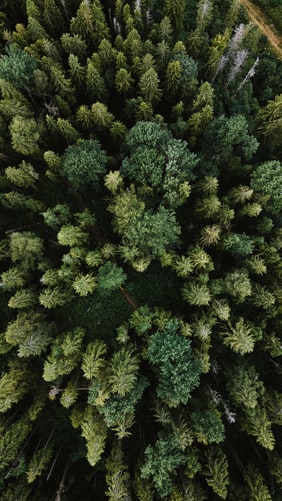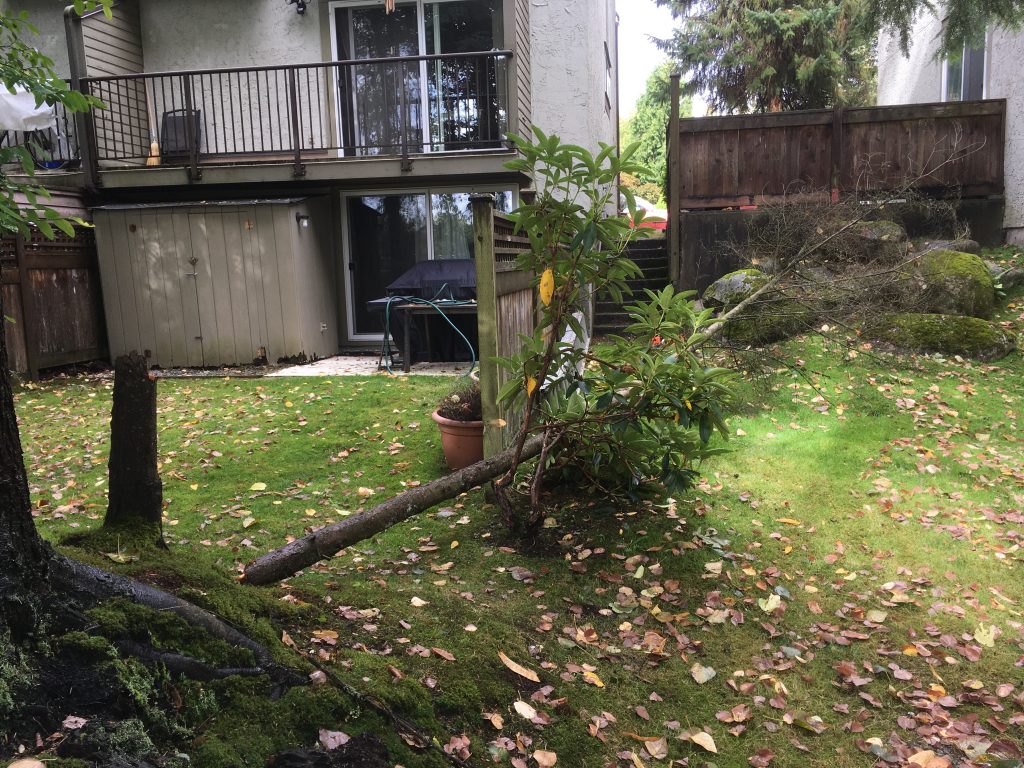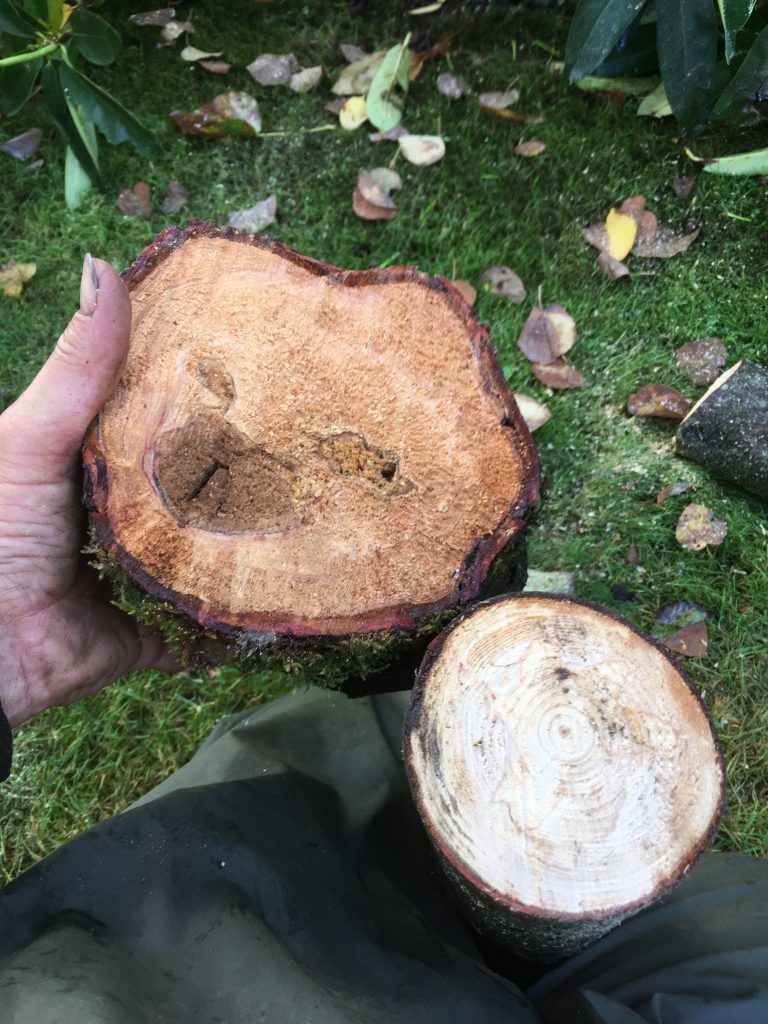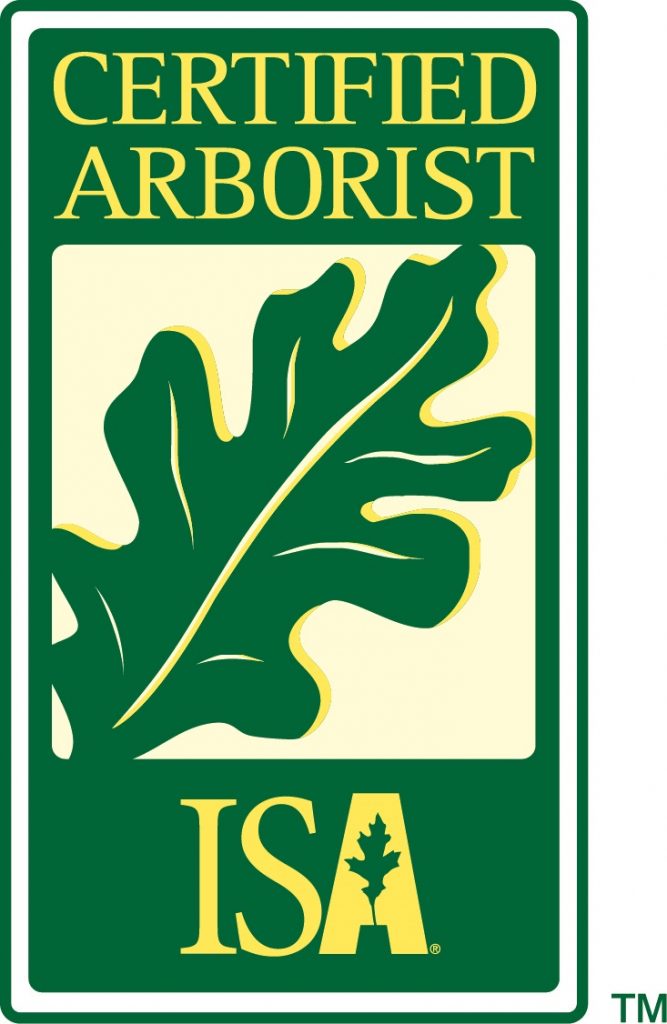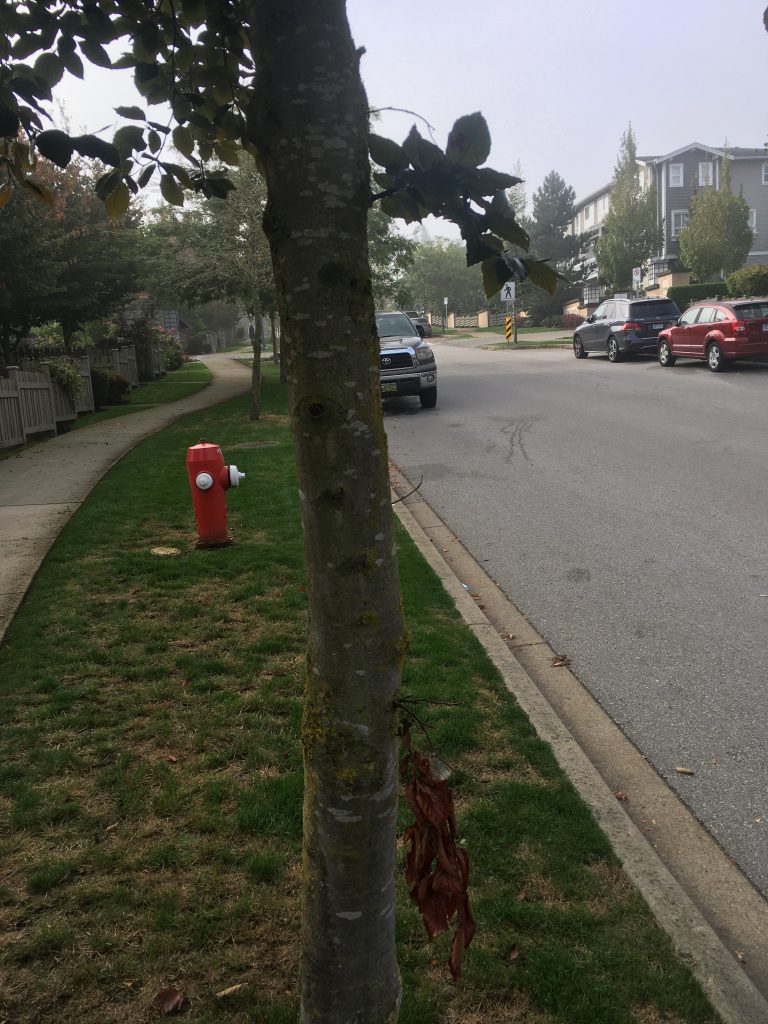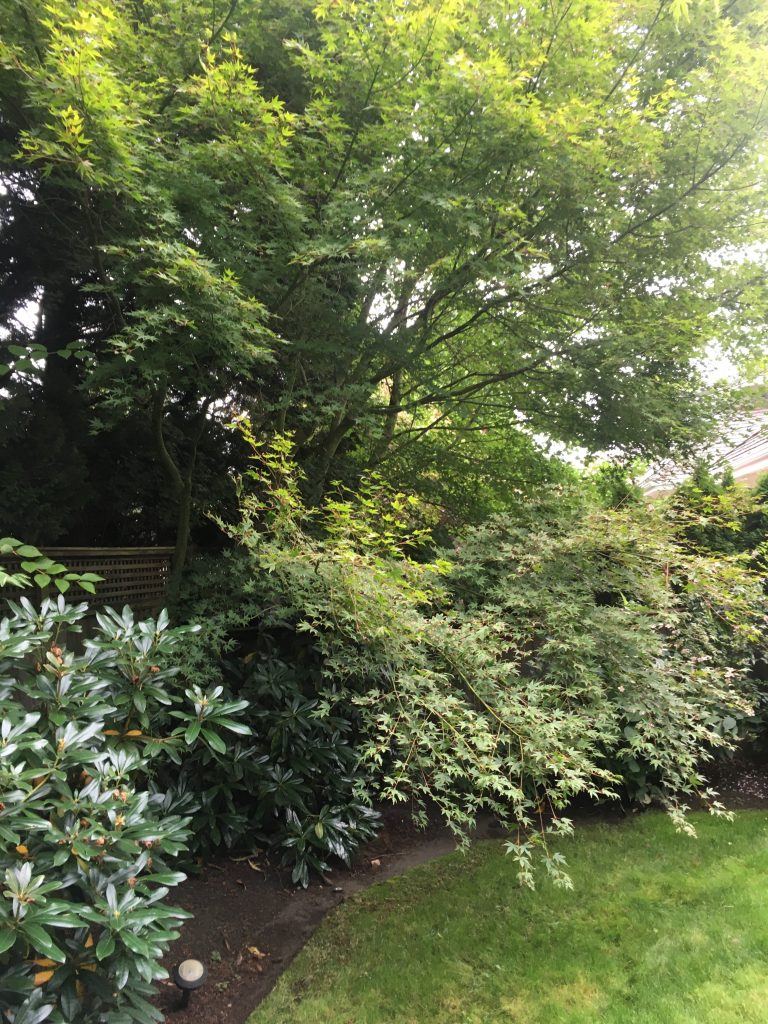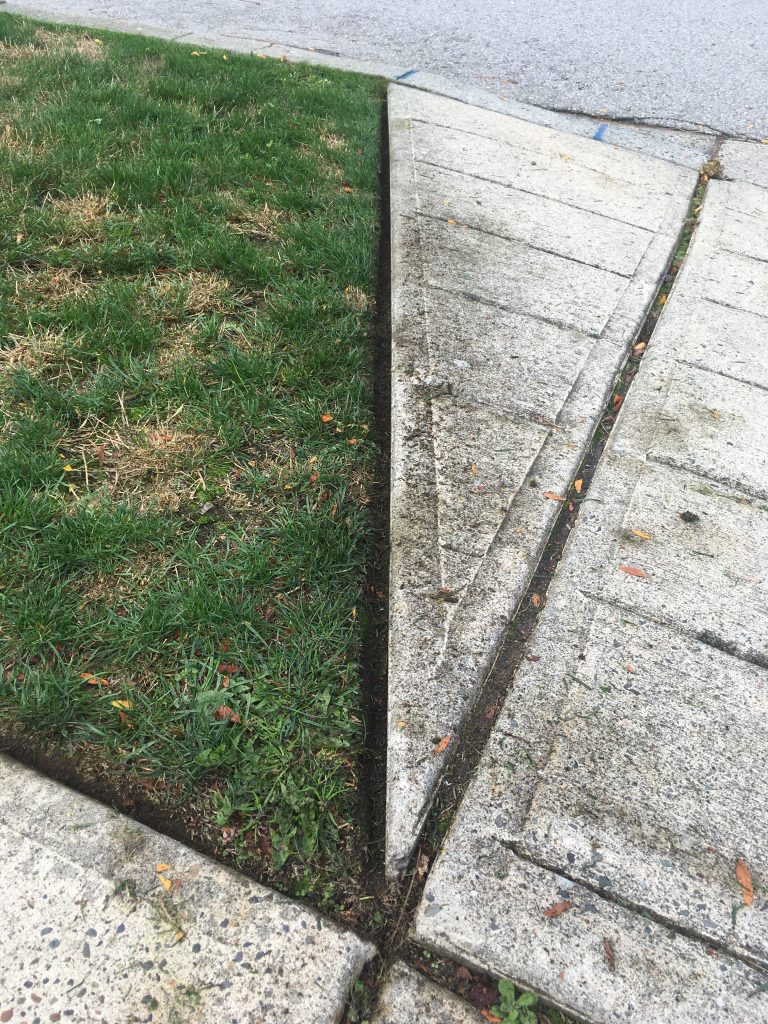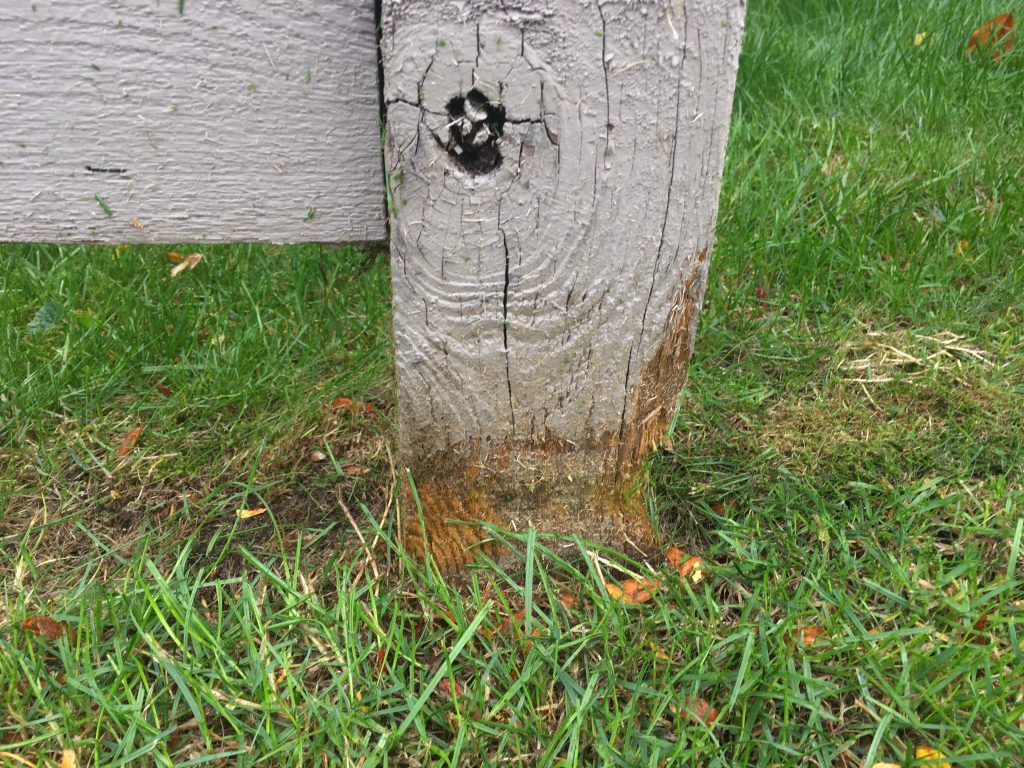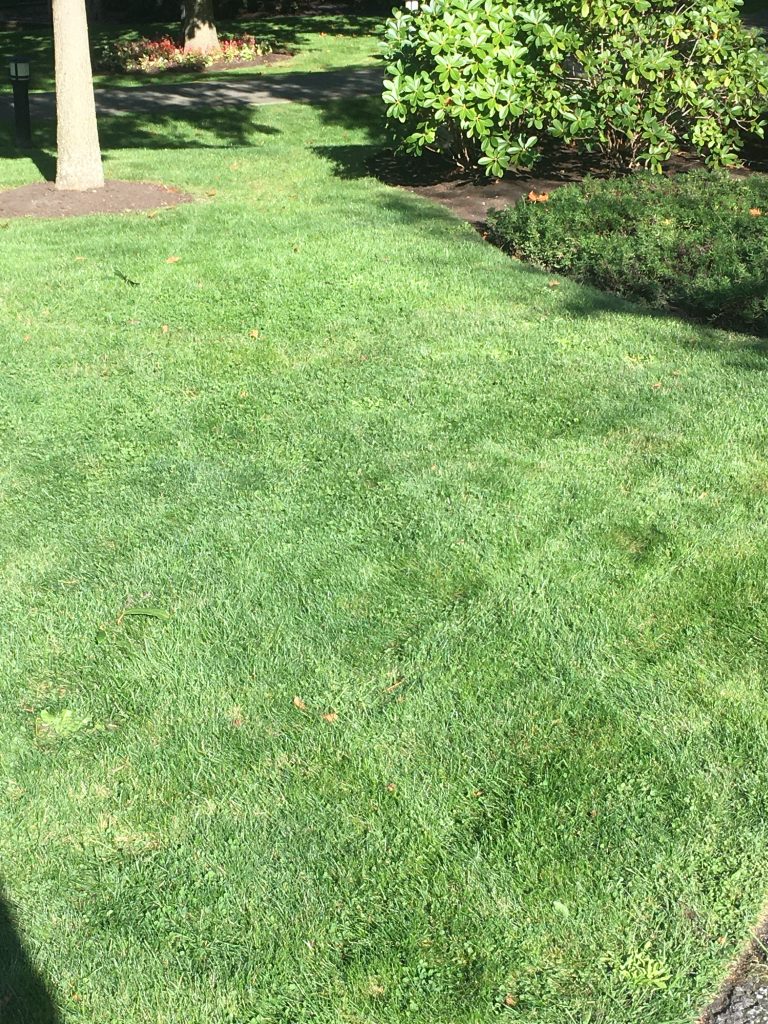Planting with Vas
My last blog post from March 30 showed my small tree removal and encouraged home owners to give it a shot, if they got a chance. Today’s blog post shows my tree planting using the same hole.
Recall that I removed a dead Amur maple (Acer ginnala) and, while I advised people to cover up the hole to avoid accidents, I did no such thing. I got in my work truck and I drove to Golden Spruce nursery. There, I picked up a Styrax japonicus (Japanese snowbell) specimen. I note the botanical name first on purpose; that’s how you buy trees at a nursery. Common names are useless.
Logistics
Since I worked solo, I had to improvise. I parked my truck over a curb to make off-loading the tree easier. I then gently lowered it onto my wheelbarrow.
Since the backyard was accessed by a slight incline, I had to struggle to get the tree up there. It’s only at times like these that I wish I was more than a chess player with weak arms.
Now I had to make a critical decision.
Yes or no to wire and burlap?
Do you keep the wire cage and burlap or do you remove them before planting? This question used to have a straight answer. My mentor, Dr. Linda Chalker-Scott says remove everything; only the tree goes in the planting hole.
But then I opened up my October, 2022 issue of Arborist News. The article, good for one education credit, says that the answer depends on personal preferences or client wishes.
Now, since I had zero input from the clients, I did what I always do. I removed everything, wire cage and burlap before planting. One argument against this removal is that it disrupts the root ball. So, I dropped it in the hole very gently, keeping the clay root ball intact as much as possible.
The article says there is no conclusive evidence showing harm to the tree by keeping the wire cage and burlap. So, it’s up to you. If you’re planting trees with me, we take everything off. If you’re planting at home, you decide.
Pro tip: make sure the strings are cut no matter what.
Planting hole
The planting hole should be wide and deep enough so the root flare is at grade. The root flare is where the trunk turns into roots and it’s visible once you remove the burlap and peel off the clay.
You can’t plant the root flare too deep or too high. Once you identify the zone, drop the root ball in the hole and put a shovel handle over top: the shovel should be straight across so the root flare and planting hole edges are in line.
My tree was planted slightly higher because I expect some settling to happen with watering.
Backfill
Always backfill your planting hole with the native soil. You can amend it a little bit with better soil but don’t try to substitute it. That’s because water will find it easier to penetrate new fluffy soil and your tree could “joystick” on you.
I used new soil only to top-dress the planted tree.
Watering
New trees need water. Obviously, don’t suffocate them by overwatering. But add some water regularly, even in winter. If everything goes well, the roots will push out into the surrounding soil and the tree will get established in its new environment.
Sometimes I stress about the trees I plant.






